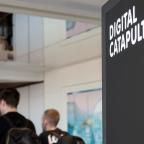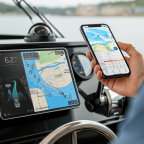
Professor Bob Stone: Plymouth's £7.6m immersive dome will struggle to interest the next generation in virtual reality
In the first of two articles on the Market Hall in Devonport, Plymouth, Professor Bob Stone argues the development cost would have been better spent on technology to inspire and educate the next generation. For the response from Lindsey Hall, chief executive of Real Ideas, which developed the Market Hall concept, please see here: Lindsey Hall: Magic moments in a time of Covid are just the beginning for the Market Hall
In July of this year the Market Hall opened in Devonport, bringing a 15m cinematic dome – described as the first of its kind in Europe - to the South West. On its website, the venue claims to “offer educational immersive experiences” and allow people “to explore immersive realities”.
The development is the result of collaboration between multiple organisations, including the Real Ideas Organisation, Plymouth City Council, Plymouth University, City College Plymouth, Plymouth College of Art, Plymouth Culture, Creative England, Destination Plymouth, Digital Plymouth, Oceansgate, and Crowdfunder.
The eye-watering £7.6m price tag was realised with funding from Arts Council England, DCMS and the European Regional Development Fund.
Overall, the site does offer a wonderful venue for events. However, as a flagship project to make Plymouth and the wider region a key hub for immersive technologies, the development is a missed opportunity.
In short, that £7.6m could have been used to purchase at least 380 comprehensive VR and AR development suites for IT departments of every school and college in Plymouth and further beyond.
The Market Hall is by no means the first dome project. Many examples of domes have been evident over the decades. Maybe not as big as the one in Devonport, but size isn’t the issue here. The military has also been using dome technologies for training for many years and our 1996 Virtual Stonehenge was displayed on the London Planetarium Dome, hosted by the late great Sir Patrick Moore. (See picture at head of article)
The Market Hall Dome is also not the first to provide questionable value for money. The University of Teesside set themselves up many moons ago to be an influential immersive tech centre using funding from the ERDF and other sponsors. In the early 2000s they built a huge vertical dome-like display facility called a Hemispherium and, not that different from Plymouth’s beanbag offering, viewers sat on raked seats (experiencing, as a result, some rather disturbing, dome-induced sound effects) and the projected imagery was controlled by one person in a “command chair”. How many young people did that inspire to get into immersive tech careers or to experience what truly immersive tech can deliver? I’d be willing to wager not many. And what about the facility’s industrial sponsors?
One project described to me back then concerned how VR could support plans to rebuild a substantial part of Teesside Airport. Once the 3D VR environment had been completed, senior airport personnel were invited to come and see the results in the Hemispherium. Many thought the experience was exciting, but did VR actually help the airport officials? No. Unbelievably, they were given a VHS tape of the VR “walkthrough” to take away and inform their colleagues. Since when was a VHS tape immersive? For decades, it has been recognised by those in the field that, to achieve “immersion” within VR, developers must provide a multi-sensory scenario that can be explored in real-time, and possesses objects that can be interacted with also in real-time, regardless of whether the VR is presented using wearable, conventional or enclosure-based display and data input techniques.
More affordable than ever
So yes, domes will undoubtedly wow their users … in the beginning at least. Domes certainly give the feeling of being enveloped and surrounded by visual and audio stimuli. But one thing they do not deliver is the means for single or multiple viewers to interact intuitively with the displayed environment … in fact they provide no more immersive capability than a large IMAX screen.
When Jaron Lanier coined the term in 1987, his company VPL Research was pioneering not only 3D graphics but immersive interactions using virtual reality head-mounted displays, movement sensors, data gloves and full-body suits.
Fundamental to all of this is that, at the time of writing, virtual technology systems have never been more accessible or affordable. In the late 1980s I was also working with VPL headsets and associated technologies as a means of improving interfaces between humans and robots – telepresence. Over the course of the following decade, we witnessed the launch of prohibitively expensive pieces of tech. Headsets costing £7000 and up; £5000 for electromagnetic head tracking systems; motion sensor gloves selling for £13,000 each. All wired up to a graphics supercomputer demanding investments of £250,000 and more. VR technology in those days was made exclusive by virtue of the cost of the equipment required.
But today, we can generate far superior immersive experiences using far cheaper equipment, such as a £300 Oculus Quest 2 “stand-alone” headset with controller-free hand tracking. That’s like having your own personal immersive dome, with all the added benefits of interactive and navigational freedom and a wealth of immersive experiences.
The XR community is screaming out for experienced and competent developers. We really should be embracing the educational and skill-generating opportunities provided by the availability and affordability of VR tech - not spending vast sums of cash on what amounts to not much more than an IMAX cinema inside a bowl.
Take it to the people
At a time when cities like Plymouth are vying to become national hubs of capability and expertise, boasting the biggest and most awe-inspiring dome or fixed-location facility is not the way to go about things. It's certainly not going to help foster the necessary skills for our future creative specialists.
Everything I’ve seen in the last 30 years points to the fact that putting together such fixed location facilities, many of which don’t last financially, is not a cost-effective way to educate the next generation and inspire young people to take up tech careers. What we need to do is get VR out there, engage, inspire, explain and make a difference.
We have to take it to the people.
Very recently the Market Hall Dome was used to show a “Finding Nemo”-like cartoon production, describing it as an “underwater paradise” and suggesting that viewers would learn about climate change as part of the package. You want to teach school kids about climate change and the fragility of underwater ecosystems in an exciting and interactive way? Then I would say focus on something of relevance on your doorstep. That’s what my small University team did back in 2007/8 with Project Scylla, where we let children explore the ex-HMS Scylla artificial reef using a virtual remotely operated vehicle (ROV).
The experience was enriched with a geographically accurate model of the Whitsand Bay coastline from Rame Head to Portwrinkle, constructed using digital terrain map data and aerial photography.
The project empowered learners to investigate and predict how natural environments survive, reproduce, colonise and evolve and may be affected by environmental changes brought about by climate change, extreme weather events or pollution.
With the power to alter the temperature of the water, kids attending a special event at Plymouth’s National Marine Aquarium learnt what a few degrees of warming really means. By making the sea slightly warmer, the algae would die, which meant the urchins would then die, followed by the starfish. That’s education – tempt them to become interested by flying around a spooky wreck reminiscent of the Titanic, then expose them to the science. And for Plymouth kids, it’s a wrecksite on their doorstep.
The power of genuine interaction
Having genuine agency over your virtual environment, as in the Project Scylla example above, is a far more powerful educational tool than showing kids videos (even wraparound videos). Countless studies have shown that by giving students some element of choice in their learning encourages higher levels of engagement, the motivation to push through challenges, and more often than not a deeper understanding of the topic at hand.
And there are healthcare benefits to the interaction afforded by virtual reality, too.
My team is involved in an evolving research project into how to exploit VR recreations of areas of natural beauty to help patients recover from traumatic incidents (including operations) and improve the wellbeing of others, from settings as diverse as Intensive Care Units to elderly care homes.
These projects include immersive wellness sessions using the sights and sounds of Wembury coastline, where users can listen to the waves and the gulls, watch the sunset, and walk around the coast.
Another project involves integrating part of Virtual Wembury with a digital medical spirometer, and using the force of your breath to launch rocks from a mediaeval catapult on the cliff onto boats moored offshore. It’s great fun and motivates patients to improve their lung capacity after surgery, whilst collecting clinical data for hospital specialists to monitor at the same time.
Glimmers of hope
VR and immersive tech is becoming more mainstream, but we must go much further as a tech community to realise its potential. People still associate VR with gaming headsets and large-scale projection enclosures, including domes - but it can be so much more than that.
We need a step change. And that’s not going to come by expecting our future generations of XR developers to flock towards large, fixed facility venues. We need to understand the needs, abilities and limitations of our end users.
So-called Human-Centred Design is something my team and I undertake for every XR project, and it hasn’t let us down once. XR is about putting the human first and foremost, defining content and interactivity long, long before hardware and delivery techniques. Forcing technology onto communities without understanding these issues is a sure-fire pathway to disaster.
For an overview of previous projects by Human Interface Technologies, click here.








